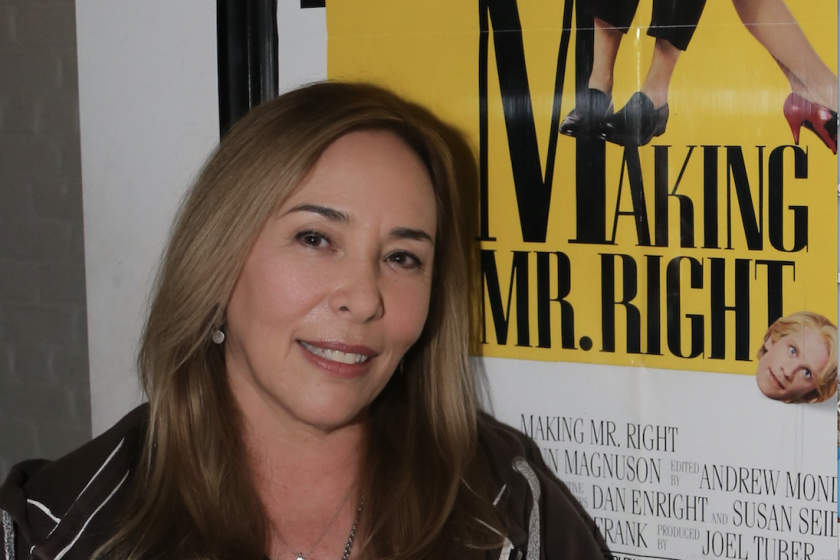Stable Mates
Twenty-five years ago, getting a divorce suddenly became an accepted solution to marital problems. When “Creative Divorce: A New Opportunity for Personal Growth” hit the bookstores in 1973, it zoomed to the top of the New York Times’ bestseller list and remained there for months. When it was published as a cheaper paperback version, it continued to sell briskly for more than a decade.
It’s little wonder. The book matched the mood of the times, when many long-held assumptions were reexamined and often discarded. Most everything was questioned, from the nation’s policy in Southeast Asia to the sanctity of the presidency and the roles of men and women in society.
Of course, the traditional family structure did not escape the intense scrutiny. “It was a yeasty period; there was reconsideration of the traditional ways of thinking about race, gender, marriage and families,” said Joan Aldous, William R. Kenan Professor of Sociology at the University of Notre Dame. “Everything was up in the air.”
What a difference a couple of decades and a soaring divorce rate can make.
Today, marriage has practically become chic, a fashion statement for conservative and liberal spouses alike. Among the reasons most frequently cited: a new emphasis on family values, numerous studies documenting the adverse effects of divorce on children and the rise of AIDS and sexually transmitted diseases.
Commitment to lasting relationships “is definitely a trend,” said Diane Sollee, an educator and founder of the Coalition for Marriage, Family and Couples Education in Washington, D.C. “Marriage is no longer seen as a crapshoot with a 50-50 chance of finding love.”
Others see the pattern and fear the repercussions. “What I see now is divorce bashing and an anti-divorce culture,” said Cynthia Dickstein-Kowaczek, head of the Chicago-based group Divorce Support Inc.
The backlash against divorce could exacerbate the problems of divorcing spouses, she said, making them virtual outcasts among friends and even family. There are few enough divorce support groups as it is, she contends, suggesting that the situation for divorced people is bound to get worse as tolerance for divorce continues to diminish.
She also said studies focusing on the detrimental effects of divorce on children don’t provide the full picture. “Children from divorced homes have problems, but so do their peers,” she said. And no one has studied the effects of unhappy marriages on children, she said.
Whether the up-with-marriage movement turns out to be a short-lived fad or not, strengthening marital ties has become a boom industry.
Consider this: Of the 1.1 billion books published in the United States last year, more than 6% fell under the category of psychology, which includes the subset of books on marriage and family, according to the New York-based group Book Industry Trends. That’s up from 5.1% of all books published in 1992, the group said.
Said John F. Kremer, of New York-based Book Marketing Update, “There tend to be cycles in the publishing industry, and this is an up-cycle for marriage books.”
A look at the stacks at Barnes & Noble or at Borders, the two largest booksellers in the country, bears this out. The stores are overflowing with manuals on how to beat the marriage doldrums, such as: “How to Stay Lovers for Life: Discover a Marriage Counselor’s Tricks of the Trade” by Sharyn Wolf (Penguin Group); “Staying Married . . . and Loving It!” by Patricia Allen and Sandra Harmon (William Morrow and Co.); “How to Commit Monogamy” by Elaine Viets (Andrews McMeel Publishing); “True Loves: Finding the Soul in Love Relationships” by Alex T. and Naomi L. Quenk (Davies Black Publishing); and “Love, Honor & Negotiate: Building Partnerships That Last a Lifetime” by Betty Carter and Joan K. Peters (PocketBooks).
“The publishing industry is responding to what people want,” said Phyllis J. Heller, president of New York-based book publicist P.R. With a Purpose. In the 1970s, “the trend was in books that dealt with being on your own. Now it’s in making the most of your relationships and keeping families together.”
The books carry the same message for couples: Respect each other and develop your own potential--for your sake and for the sake of your partner. Communication is a key ingredient for a healthy relationship. Good sex is a must.
As timeworn an idea as it is, the pursuit of marital fulfillment is catching on. The evidence abounds. The national group of Christian conservative males called the Promise Keepers seems to have tapped a responsive chord in the nation. Hundreds of thousands of men gathered in Washington, D.C., from across the nation in October to publicly pledge their commitment to preserving family bonds, along with other, more controversial positions. “There’s lots of concern over marriage and relationships out there,” said Norville Glenn, a professor and sociologist at the University of Texas. “There’s a feeling that things have gone too far in one direction. People now want greater stability.”
Said a spokeswoman for Borders, “The me-thing of the 1980s is gone.”
It’s a far cry from the late 1960s and early 1970s, when the tumult of the times permeated most every institution. Long-held traditions were cast aside--often out of principle. States across the country started loosening up their divorce laws. People’s behavior followed. By the late 1970s, one of every three marriages broke apart.
That’s why “Creative Divorce’s” author, Mel Krantzler, at the time a recently divorced 50-year-old father of two teens, seemed to offer a message of hope in the midst of social chaos. Discard the old-fashioned negative connotations around marital breakup, Krantzler urged, and rewrite the rules.
Krantzler’s call summed up the zeitgeist of a generation. New and interesting approaches to marriage surfaced. Perhaps the most controversial was put forward in the 1972 book called “Open Marriage: A New Lifestyle for Couples” by Nena and George O’Neill (M. Evans and Co.).
Even though the book focused on supporting marriage as a lasting institution, it advocated that spouses break out of the stereotypical 1950s roles of man as breadwinner and woman as housewife. The O’Neills encouraged couples to forsake the stifling and closed marriage arrangement that denied both partners their unique identities.
And the book went a step further. The O’Neills proposed that interested couples pursue “sexually open marriage.” SOM, as the authors called it, describes a marital arrangement in which the spouses are free to pursue sexual relations with other people.
Although only a small part of the book was dedicated to SOM, the idea dominated the rest of its contents. “It was not a very elaborate chapter,” said Nena O’Neill. “But it overshadowed the core aspect of open marriage--giving each other the space to grow and love and build intimacy.”
Open marriage was a complicated notion for most people to grasp. But Krantzler’s approach was like a soothing balm. It assuaged the guilt of a growing number of people sacrificing their marriages in the quest of greater happiness, personal fulfillment and self-actualization. The benefit of cutting loose from a loveless union merited the short-term pain that would follow, he argued. “I have become a happier and stronger person than I was before,” Krantzler wrote of his life as a born-again bachelor after 24 years of marriage.
*
The downside of the skyrocketing divorce rate became evident only years later. “It takes awhile to see these things,” Notre Dame’s Aldous said. “At the time, the consequences to children were not so evident. Soon, though, people had to start paying attention to what this was doing to the kids.”
So what’s Krantzler up to these days? You can find his latest work in the marriage section of most bookstores. It’s called “The Seven Marriages of Your Marriage: How Couples Can Make Love Last by Understanding and Managing the Many Marriages--and Divorces--in Every Committed Relationship” (Harper Pocketbooks).
Just goes to show, the more things change, the more they stay the same.
More to Read
Sign up for our Book Club newsletter
Get the latest news, events and more from the Los Angeles Times Book Club, and help us get L.A. reading and talking.
You may occasionally receive promotional content from the Los Angeles Times.






